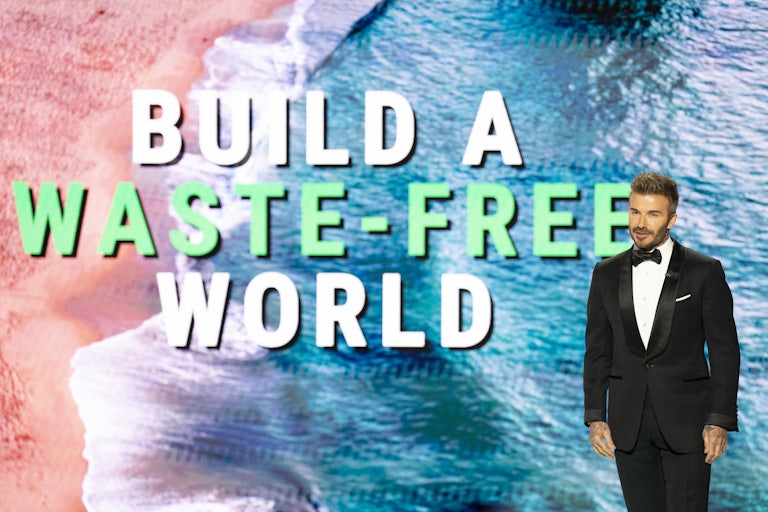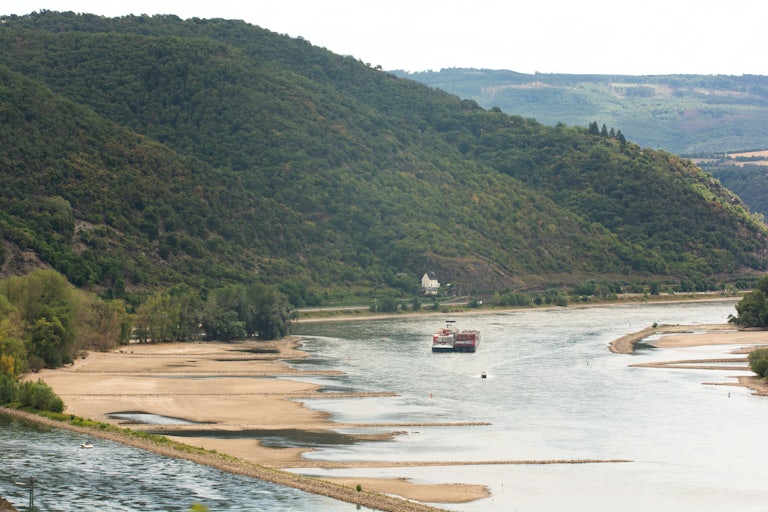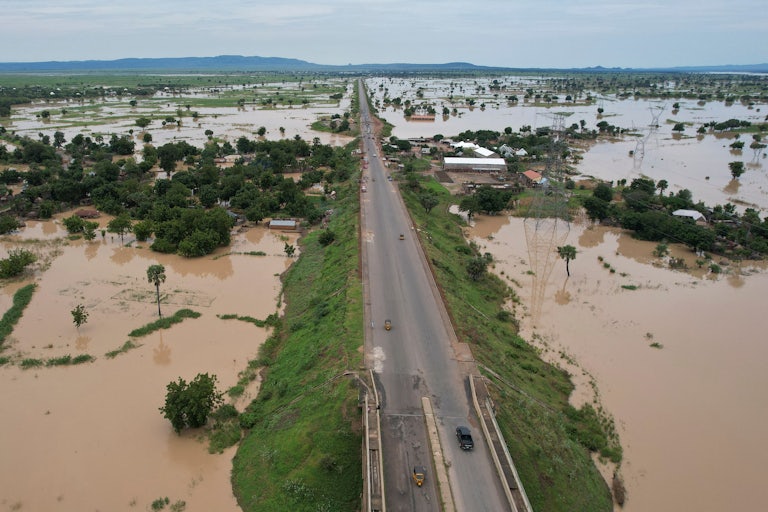This Year’s Big Breakthroughs on Climate
It wasn’t all doom and gloom in 2022.

It’s been a heck of a year for climate coverage. It started, don’t forget, with fears that any chance of robust climate policy passing Congress might be dead, courtesy of Senator Joe Manchin’s 340th reversal. Now, as 2022 closes, climate advocates can look back on some key victories, from the passage of the Inflation Reduction Act—climate legislation with a politically conciliatory name—to America’s eleventh-hour decision to support climate financing for vulnerable countries at the U.N. climate conference known as COP27.
But the IRA on its own won’t be enough to meet climate targets, and some developments this year were more damaging—like the blockage of climate-conscious monetary policy, the Supreme Court’s ruling against Environmental Protection Agency regulations, or the growing Republican hysteria about Wall Street firms “discriminating” against fossil fuel—and a lot remains up in the air. So how should we think about the past 12 months of whiplash? Here are some of the most prescient and insightful pieces we published on these topics, which may help make sense of the year as it closes.
The first big piece of climate news didn’t seem like climate news: Russia’s invasion of Ukraine. But weaning Europe off Russian gas triggered a wave of climate-relevant consequences, from a new focus on energy efficiency in Germany (good), to the U.S. frenetically green-lighting a bunch of new natural gas exports and even considering new liquid natural gas terminals (bad). New gas infrastructure, Kate Aronoff pointed out in a series of pieces on the crisis in February, won’t come online fast enough to help out this winter, and natural gas leaks an astonishing quantity of methane at every phase of the production and consumption process.
The first quarter of 2022 closed with more bad news: Joe Manchin blocking the nomination of Sarah Bloom Raskin, an advocate for sensible regulations like climate stress tests and emissions disclosures, to the Federal Reserve. Kate reported on a gas conference Manchin attended immediately before announcing his opposition, noting that Manchin slipped up and referred to the assembled fossil fuel execs as “we.” (The pronoun was not entirely inaccurate, given his profits from the coal sector.) Aaron Regunberg later wrote about the many ways the Fed is “neglecting its duty” on climate change.
As the spring ticked onward with Manchin still holding up climate policy, Mary Annaïse Heglar voiced the frustration of many, persuasively arguing that it was time to stop calling climate prevaricators “centrists”:
Centrist is no longer the right moniker for politicians who want to “compromise” with the radical right. Centrist implies reasonable—someone willing to meet in the middle and consider many approaches to reach a goal. But at this stage, if you’re in favor of new fossil fuel infrastructure when all the science says that’s a death sentence, what exactly is your goal?
News that Manchin had finally compromised, allowing climate policy to pass in the form of the Inflation Reduction Act, triggered a wave of celebration in climate circles—but also disappointment, as the bill included support for fossil fuel drilling and hazy notions like climate-smart farming. Aaron Regunberg succinctly summed up the cognitive dissonance. “Though I personally cried tears of joy as I held my 18-month-old son in my arms to watch the IRA’s passage—because I believe this last-minute buzzer-beater of a climate win greatly brightens the previously grim terrain on which we’ll spend our lives fighting for a livable future,” he wrote, “I also think the contradictions of this bitter triumph offer important insights for the work we have ahead of us.” The act contained no direct policy to wind down fossil fuels—a place for activists to focus their efforts in the future.
This year brought two more big surprises on the climate change front. First came the midterms, where the so-called “red wave” failed to materialize, preserving the IRA from rollbacks that a Republican Congress might have enacted. Liza Featherstone wrote about one possible lesson from the November exit polls: Voters care more about climate change than previously thought, and Democrats might want to start capitalizing on that.
Then, at COP27, the United States reversed decades of intransigence and agreed to support a new fund for the damage poorer countries suffer from richer countries’ emissions. Kate Aronoff examined how, exactly, this came to happen, and what remains unknown going forward.
Finally, no recap of 2022’s mixed legacy on science and science policy would be complete without talking about Covid-19. Back in February, TNR regular Melody Schreiber pointed out the increasing radicalism of the anti-mask movement, particularly with regard to children. The politicization of masking has come back to haunt the country this fall and winter, as pediatric wards are overflowing with respiratory syncytial virus, flu, and Covid cases. “Many of the preventative measures proven effective during the Covid-19 pandemic are going broadly unused,” Vox recently reported. In May, Melody reported the troubling implications of rapid Covid reinfection, which meant people recently recovered from Covid could contract it again just a few months later. All of this was ignored when President Biden declared the pandemic “over.” At the time, Melody pointed out that this proclamation was likely to sabotage uptake of the new bivalent boosters. Months later, uptake of these boosters remains low.
We published a lot of terrific pieces that aren’t named here, including powerful personal essays and meditations on the contradictions of media coverage in the era of climate crisis. As always, you can find more pieces at the Apocalypse Soon vertical on The New Republic’s website.
![]()
Good News
The breakthrough in nuclear fusion technology announced by the Department of Energy on Tuesday is pretty cool. (Just don’t expect it to save us from the urgent problem of energy transition to limit global warming. Putting this discovery to use will probably take a few decades, and we need to transition off fossil fuels before that.)
![]()
Bad News
Solar installations have slowed, despite the incentives in the Inflation Reduction Act.
Stat of the Week
1 in 100
That’s the proportion of heart disease deaths that a new study says can be tied to extreme temperatures. (Read the Axios write-up here.)
Elsewhere in the Ecosystem
Unearthing the Original Mediterranean Diet
This feature from Hakai Magazine is so cool. Journalist Paul Greenberg follows archaeologist Dimitra Mylona, who’s taken to counting fish bones at ancient sites to show that, contrary to popular belief, ancient Mediterranean societies ate a lot of fish. Incidentally, this could also overturn current assumptions about the Mediterranean naturally being low in nutrients. “Because few rivers flow into the Mediterranean,” Greenberg writes, “the sea is considered nutrient-starved and described as containing little phytoplanktonic life—oligotrophic in scientific parlance.” But now not just archaeologists but marine biologists are reconsidering that.
“I don’t accept this idea that the Mediterranean is a poor sea,” [marine biologist Daniel] Pauly tells me. “This is what people always say—few rivers going into the sea to deliver the nutrients. But we know from Roman records that there was probably a significant population of gray whales in the sea. That these whales brought in nutrients from the wider Atlantic, and through their feces fertilized the sea,” Pauly says. What happened to these whales? “The Romans likely killed them all. Everywhere you look, we have evidence of a more abundant sea.” Sharks are not abundant in the Med, but that’s today. “We just did an analysis of film taken by the Austrian cinematographer Hans Hass in 1942. There are sharks everywhere.”
Read Paul Greenberg’s piece at Hakai Magazine.
This article first appeared in Apocalypse Soon, a weekly TNR newsletter authored by deputy editor Heather Souvaine Horn. Sign up here.




.png)

.png)

